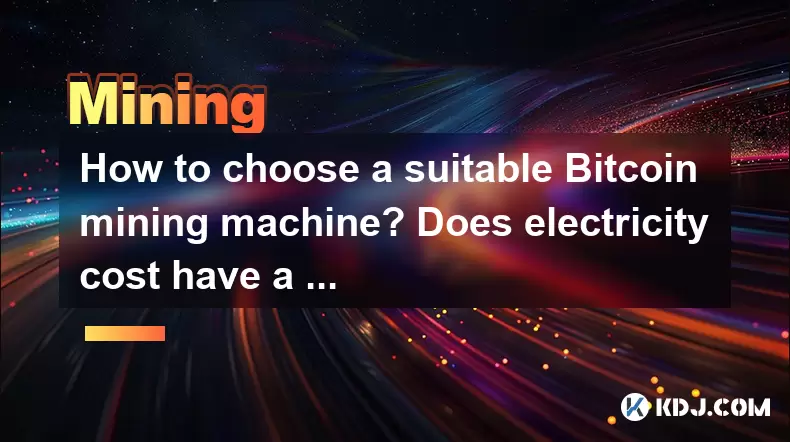-
 Bitcoin
Bitcoin $118400
0.47% -
 Ethereum
Ethereum $3836
2.20% -
 XRP
XRP $3.157
2.98% -
 Tether USDt
Tether USDt $0.9999
-0.03% -
 BNB
BNB $801.5
1.31% -
 Solana
Solana $180.9
2.07% -
 USDC
USDC $0.9999
-0.02% -
 Dogecoin
Dogecoin $0.2225
2.50% -
 TRON
TRON $0.3285
-1.02% -
 Cardano
Cardano $0.7789
2.60% -
 Hyperliquid
Hyperliquid $43.60
2.39% -
 Sui
Sui $3.892
4.41% -
 Stellar
Stellar $0.4229
3.34% -
 Chainlink
Chainlink $18.01
3.98% -
 Hedera
Hedera $0.2745
6.77% -
 Bitcoin Cash
Bitcoin Cash $582.3
3.38% -
 Avalanche
Avalanche $23.77
1.04% -
 Ethena USDe
Ethena USDe $1.001
0.01% -
 Toncoin
Toncoin $3.493
3.59% -
 Litecoin
Litecoin $110.0
2.48% -
 UNUS SED LEO
UNUS SED LEO $8.936
-0.37% -
 Shiba Inu
Shiba Inu $0.00001304
2.49% -
 Uniswap
Uniswap $9.999
1.09% -
 Polkadot
Polkadot $3.897
3.26% -
 Monero
Monero $308.6
-0.83% -
 Dai
Dai $0.9999
-0.01% -
 Bitget Token
Bitget Token $4.504
-0.04% -
 Pepe
Pepe $0.00001154
2.95% -
 Cronos
Cronos $0.1471
3.06% -
 Ethena
Ethena $0.6691
19.53%
How to choose a suitable Bitcoin mining machine? Does electricity cost have a big impact?
When choosing a Bitcoin mining machine, consider hash rate, power consumption, cost, noise level, and brand reliability to maximize profitability and efficiency.
May 14, 2025 at 07:14 pm

Choosing a suitable Bitcoin mining machine is a crucial decision for anyone looking to enter the world of cryptocurrency mining. The right machine can significantly impact your profitability and efficiency. Additionally, understanding the role of electricity costs in mining is essential, as it can greatly affect your overall expenses. In this article, we will explore the key factors to consider when selecting a Bitcoin mining machine and delve into the impact of electricity costs on mining operations.
Understanding Bitcoin Mining Machines
Bitcoin mining machines, also known as ASIC miners, are specialized hardware designed to solve the complex mathematical problems required to validate transactions and add them to the blockchain. These machines vary in terms of performance, power consumption, and cost. When choosing a mining machine, it's important to consider several factors to ensure you make an informed decision.
Key Factors to Consider When Choosing a Bitcoin Mining Machine
Hash Rate
The hash rate is a critical factor to consider when selecting a mining machine. It represents the number of calculations the machine can perform per second. A higher hash rate means the machine can solve more problems and potentially mine more Bitcoins. When comparing different machines, look for the one with the highest hash rate within your budget.
Power Consumption
Power consumption is another vital aspect to consider. Mining machines consume a significant amount of electricity, and the more power they use, the higher your electricity bills will be. Look for machines with a good balance between hash rate and power consumption. The efficiency of a machine is often measured in terms of joules per terahash (J/TH), with lower numbers indicating better efficiency.
Cost
The initial cost of the mining machine is an important consideration. High-performance machines tend to be more expensive, but they may offer better long-term returns. Consider your budget and the potential return on investment (ROI) when making your decision. It's also worth looking at second-hand options, as they can sometimes offer good value for money.
Noise Level
Noise level is often overlooked but can be a significant factor, especially if you plan to operate the machine at home. Some mining machines can be very loud, which may be disruptive. If noise is a concern, look for machines that are designed to be quieter or consider investing in soundproofing solutions.
Brand and Reliability
The brand and reliability of the mining machine are also important. Established brands like Bitmain, Canaan, and MicroBT are known for producing high-quality machines. Research the manufacturer's reputation and read reviews from other miners to ensure you are investing in a reliable product.
The Impact of Electricity Costs on Bitcoin Mining
Electricity costs play a significant role in the profitability of Bitcoin mining. The cost of electricity can vary greatly depending on your location and the rates offered by your electricity provider. Understanding how electricity costs impact your mining operation is crucial for making informed decisions.
Calculating Electricity Costs
To understand the impact of electricity costs, you need to calculate how much it will cost to run your mining machine. This involves determining the machine's power consumption in watts and multiplying it by the number of hours it will run per day and the cost per kilowatt-hour (kWh) of electricity.
- Determine the power consumption of your mining machine in watts.
- Multiply the power consumption by the number of hours the machine will run per day.
- Multiply the result by the cost per kWh of electricity to get the daily electricity cost.
- Multiply the daily cost by the number of days in a month to get the monthly electricity cost.
Strategies to Minimize Electricity Costs
There are several strategies you can use to minimize electricity costs and improve the profitability of your mining operation:
- Choose an efficient mining machine with a low J/TH rating.
- Shop around for the best electricity rates. Some regions offer lower rates or special plans for high-energy users.
- Consider renewable energy sources like solar or wind power, which can be more cost-effective in the long run.
- Join a mining pool to share the costs and benefits of mining with other miners.
Comparing Different Bitcoin Mining Machines
To help you make an informed decision, let's compare some popular Bitcoin mining machines based on their hash rate, power consumption, and efficiency.
Bitmain Antminer S19 Pro
- Hash Rate: 110 TH/s
- Power Consumption: 3250 W
- Efficiency: 29.5 J/TH
The Bitmain Antminer S19 Pro is one of the most powerful and efficient mining machines available. It offers a high hash rate and relatively low power consumption, making it a popular choice among miners.
Canaan AvalonMiner 1246
- Hash Rate: 90 TH/s
- Power Consumption: 3420 W
- Efficiency: 38 J/TH
The Canaan AvalonMiner 1246 is another strong contender, offering a good balance between hash rate and power consumption. It is slightly less efficient than the S19 Pro but can still be a viable option depending on your specific needs and budget.
MicroBT WhatsMiner M30S++
- Hash Rate: 112 TH/s
- Power Consumption: 3472 W
- Efficiency: 31 J/TH
The MicroBT WhatsMiner M30S++ offers a high hash rate and competitive efficiency. It is a good choice for miners looking for top performance and reasonable power consumption.
Making the Final Decision
When making your final decision on a Bitcoin mining machine, consider all the factors discussed above. Weigh the pros and cons of each machine and calculate the potential ROI based on your electricity costs and the current Bitcoin price. Remember that the cryptocurrency market is volatile, and what may be profitable today may not be tomorrow. Therefore, it's essential to stay informed and be prepared to adapt your strategy as needed.
Frequently Asked Questions
What is the lifespan of a Bitcoin mining machine?
The lifespan of a Bitcoin mining machine can vary depending on usage and maintenance. On average, a well-maintained machine can last between 2 to 5 years. Regular cleaning and ensuring proper ventilation can help extend the life of your mining machine.
Can I mine Bitcoin with a regular computer?
Mining Bitcoin with a regular computer is not practical due to the high computational power required. Bitcoin mining machines, or ASIC miners, are specifically designed for this purpose and are much more efficient and effective.
How do I know if Bitcoin mining is profitable for me?
To determine if Bitcoin mining is profitable for you, you need to calculate your potential earnings against your costs. This includes the cost of the mining machine, electricity costs, and any other operational expenses. Use online mining calculators to estimate your ROI based on current Bitcoin prices and difficulty levels.
Is it better to mine alone or join a mining pool?
Joining a mining pool can be more beneficial for most miners. Mining pools allow you to combine your resources with other miners, increasing your chances of solving the mathematical problems and earning rewards. While the rewards are shared among pool members, they are more consistent and predictable than mining alone.
Disclaimer:info@kdj.com
The information provided is not trading advice. kdj.com does not assume any responsibility for any investments made based on the information provided in this article. Cryptocurrencies are highly volatile and it is highly recommended that you invest with caution after thorough research!
If you believe that the content used on this website infringes your copyright, please contact us immediately (info@kdj.com) and we will delete it promptly.
- Pudgy Penguins Price Prediction: Buying Opportunity or Insider Dump?
- 2025-07-31 18:50:35
- Shrapnel, GalaChain, and China Gaming: A New Frontier
- 2025-07-31 19:10:35
- Dogecoin Howl: Bullish Signals and Analyst Bites – Is the Meme Coin Ready to Pounce?
- 2025-07-31 18:30:16
- Decoding Crypto Presales, Ethereum's Role, and Navigating a Tricky Altcoin Season
- 2025-07-31 18:30:16
- Bolivia, Crypto, and El Salvador: A Shifting Landscape
- 2025-07-31 18:50:35
- DAOs, Tokenomics, and Game Communities: Leveling Up the Game
- 2025-07-31 18:56:31
Related knowledge

What was the highest APY for IRON mining?
Jul 23,2025 at 05:14am
Understanding IRON Token and Its Mining MechanismThe IRON token is a stablecoin that operates within the Iron Finance ecosystem, primarily on blockcha...

What is impermanent loss in IRON pools?
Jul 23,2025 at 09:00am
Understanding Impermanent Loss in the Context of IRON PoolsImpermanent loss is a phenomenon that affects liquidity providers in decentralized finance ...

How to claim rewards from IRON mining?
Jul 23,2025 at 02:21pm
Understanding IRON Mining and Reward MechanismsIRON Finance operated as a decentralized finance (DeFi) protocol on the Polygon and Binance Smart Chain...

How to claim rewards from IRON mining?
Jul 29,2025 at 05:07am
Understanding IRON Mining and Reward MechanismIRON is a dual-token system designed to stabilize the value of a synthetic asset through a combination o...

IRON mining tutorial for beginners
Jul 27,2025 at 12:01am
What Is IRON and How Does It Work in the Cryptocurrency Ecosystem?IRON is a cryptocurrency token that operates on the Binance Smart Chain (BSC) and is...

How to calculate APY for IRON mining?
Jul 28,2025 at 09:49am
Understanding APY in the Context of IRON Token MiningWhen engaging in IRON token mining within decentralized finance (DeFi) platforms, Annual Percenta...

What was the highest APY for IRON mining?
Jul 23,2025 at 05:14am
Understanding IRON Token and Its Mining MechanismThe IRON token is a stablecoin that operates within the Iron Finance ecosystem, primarily on blockcha...

What is impermanent loss in IRON pools?
Jul 23,2025 at 09:00am
Understanding Impermanent Loss in the Context of IRON PoolsImpermanent loss is a phenomenon that affects liquidity providers in decentralized finance ...

How to claim rewards from IRON mining?
Jul 23,2025 at 02:21pm
Understanding IRON Mining and Reward MechanismsIRON Finance operated as a decentralized finance (DeFi) protocol on the Polygon and Binance Smart Chain...

How to claim rewards from IRON mining?
Jul 29,2025 at 05:07am
Understanding IRON Mining and Reward MechanismIRON is a dual-token system designed to stabilize the value of a synthetic asset through a combination o...

IRON mining tutorial for beginners
Jul 27,2025 at 12:01am
What Is IRON and How Does It Work in the Cryptocurrency Ecosystem?IRON is a cryptocurrency token that operates on the Binance Smart Chain (BSC) and is...

How to calculate APY for IRON mining?
Jul 28,2025 at 09:49am
Understanding APY in the Context of IRON Token MiningWhen engaging in IRON token mining within decentralized finance (DeFi) platforms, Annual Percenta...
See all articles

























































































